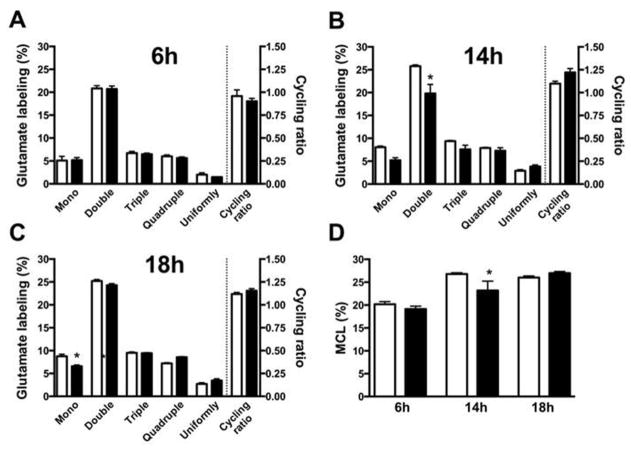Figure 3.
Glucose metabolism in cultured neurons is only marginally affected by in vitro trauma. Cultured neurons were subjected to in vitro trauma (see Methods section) and glucose metabolism was assayed by allowing the cultures to metabolize [U-13C]glucose (2.5 mM) for 2h (from 4–6 h post trauma) in the presence of lactate (1 mM) and glutamine (0.5 mM). Panels A, B, and C show the percent 13C-labeling of intracellular glutamate and the calculated TCA cycling ratios at 6, 14, and 18h post trauma, respectively, as determined by mass spectrometry (see Methods and Results). The labeling in glutamate reflects the combined process of glycolysis and oxidative metabolism in the TCA cycle. Panel D summarizes the labeling in intracellular glutamate as molecular carbon labeling (MCL, %) (see Methods section). Small decreases in double-labeled glutamate (B) and MCL (D) were observed after 14 h, but otherwise no effects were detected except for a small decrease in mono-labeled glutamate at 18 h (C), indicating that glucose metabolism is not affected by in vitro trauma. The data are presented as mean ± SEM. Statistics were calculated employing ANOVA, followed by Tukey’s multiple comparisons test. A p-value of 0.05 was considered statistically significant and indicated by an asterisk.

